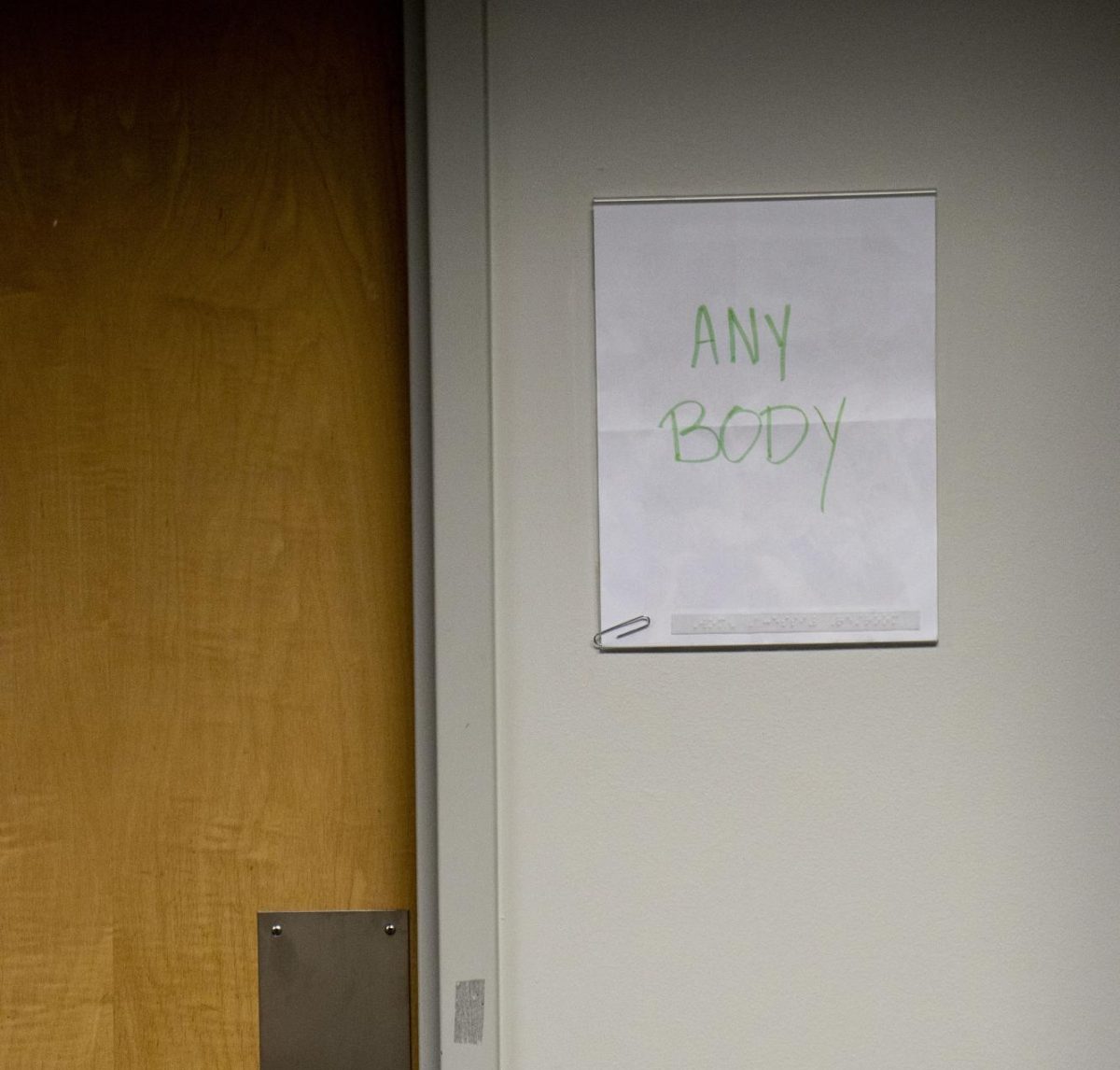American University students will have the option to select a new meal plan before Aug. 1, when tuition and fee payments are due, after the university announced a new meal plan for the Fall 2023 semester in a mid-semester dining update.
The university’s changes to the meal plan impact the cost to students and their options in dining on campus. Incoming Sophomore Kylie Finkelstein was enrolled in the standard first-year meal plan but won’t have a meal plan next year. Finkelstein said she purposefully avoided a plan and doesn’t think this new meal plan is appealing to the majority of students.
“I think it sounds God-awful,” Finkelstein said. “I think it’s very limiting, especially for upperclassmen. I think it is not accommodating to the majority of students.”
Finkelstein said the new meal plan isn’t accommodating because it limits students to only eat at the dining hall certain days of the week and it has more restraints on where meal swipes can be used.
Students were able to use meal swipes at Terrace Dining Room, meal exchanges at retail places on campus and Eaglebucks for on campus retail places, coffee shops, convenience stores and off-campus venues, according to the Spring 2023 meal plan. The block plan gave students a certain amount of meal swipes, exchanges and Eaglebucks for the semester.
The new meal plan diverges from the old block plans. According to the AU website, the Fall 2023 meal plan will have unlimited access to the dining hall for a certain number of days per week, a certain amount of meal exchanges per week and a limited amount of dining dollars. Guest meals and exclusive events are also now part of the meal plan.
Dining places on campus serve 45,000 meals a week, according to a December university memorandum.
Radhika Bhargava, an incoming sophomore at AU, said she learned about the new meal plan through AU and word of mouth.
“There’s been, you know, some general outrage, discomfort in the freshman class,” Bhargava said.
A lot of the outrage has centered on the dramatic drop in Eaglebucks, Bhargava said. Eaglebucks have been removed from the dining program. Bhargava referenced how she would save her Eaglebucks throughout the semester, but was unsure if she would be able to continue that with the limited dining dollars.
In making this decision, AU administrators met with student leaders and representatives from different departments and organizations, like the Residence Hall Association, said Senior Director of Dining and Auxiliary Services Ann-Marie Powell. AU organized town halls and looked at data and surveys.
Powell said AU looked at what changes students were asking for and ways to give students more variety. Powell said there was a lack of options in the previous meal plan.
“It’s the same meal plan, from when I got there in 2017, of what we currently have,” Powell said. “And that was one of the things students were saying, ‘Well, we want to see some changes.’”
Melissa Sloan, a sophomore at AU, said these new meal plans limit flexibility.
“I don’t think it’s very accommodating as far as, like, it’s very TDR heavy. And, like, a lot of people have issues with a lot of cross contamination in TDR,” Sloan said.
Sloan also said that the variety in retail places was important.
“I just know a lot of people have gotten sick in TDR. So, like, having that sense of variety is a good thing,” Sloan said.
Incoming Junior Sanvi Bangalore said she doesn’t think that unlimited TDR meals justify the raised cost of the meal plan. She said the new meal plan motivates her to avoid eating on campus.
“Even the cheapest one is still more expensive than the cheapest one now. So they’re just more expensive overall,” Bangalore said. “The only way that you would be able to get multiple retail meal exchanges per week is if you’re on like the highest costing plan, which I think is a little backwards.”
The AU website says that meal swipes can be used only at TDR. There is a 20-minute delay where you can re-enter after leaving. This is a change from last year’s meal plan, where meal swipes could be used at other food places on campus.
Retail meal exchanges can be used at retail places on campus, such as the convenience stores and Freshens, a new dining venue on campus. Dining dollars can be used for snacks from retail places on campus and for exclusive dining events.
Incoming Junior Daniel Punales has been on a meal plan since his first year, and he said he will continue to be on it next year. Punales said he doesn’t think that the new meal plan was thought through.
“They prematurely put it out before actually, like sitting down, finalizing the plan, because I feel like there’s a lot of things in the air,” Punales said.
Last year, AU opened Paper Lantern, True Burger, Halal Shack and Baba’s Pizza and moved Hissho Sushi to Kerwin Hall, according to the memorandum. East Campus Convenience Store underwent renovations to include a new fresh produce market. AU replaced Build Pizza with Freshens and Cravetown.
Powell said that dining program improvements included improving the transactional system, upgrading existing dining places on campus and adding new ones. Powell said that this includes adding Qdoba and Panera restaurants, along with an extra cash register and new drinks at Starbucks.
Powell also said that they would add lockers for mobile orders where students can easily pick up their food.
Sloan said she thinks that these new additions are reasonable retail options.
“They probably won’t be visited as frequently as they might have been if the current meal plan stayed,” Sloan said.
Punales said that this new meal plan will contribute to food insecurity on campus.
“The concept right now that they have will expand inequities on campus. Just because they’ve reduced access to food,” Punales said.
According to Health Affairs, in 2020, 29% of students at four-year colleges reported having experienced food insecurity. Food insecurity disproportionately affects students of color. Food insecurity can impact students’ grades, attendance, and completion rates.
Financial or housing insecurity, work or family obligations and student loan debt are contributing factors in causing food insecurity, according to Health Affairs. Food insecure students are also more likely to have indications of stress and depression, along with an increased risk of obesity.
Food insecurity is fought on campuses through food pantries, which are usually run by students on campus, according to Health Affairs. These are often limited in scope and in reach. AU has operated The Market, a food pantry, since 2017.
Punales said he thinks that the new meal plan will drive people to use, and possibly overwhelm, The Market.
“It’s going to make the food insecurity worse, which then is going to influence the amount of donations into the pantry and have more people relying on The Market for that,” Punales said. “It’s all like a chain effect that comes from one decision made by AU administration.”
The Market is donation based and provides free food and personal care items to students, according to AU’s website. It was designed as a supplemental food source.
The Market’s resources are limited because it’s run on donations, according to the AU website.
Students may shop there once a week and take up to one bag of groceries, according to the university. AU students must fill out a form that assesses their food insecurity in order to shop at The Market.
Powell said that the new plan will help food insecurity efforts around campus, especially through guest meals.
“So if you have a friend that you know, somebody who is food insecure, you can take them to [on-campus] food places,” Powell said. “So, you have those options that you didn’t have before.”
Another program to resist food insecurity is Eagles Helping Eagles, according to the AU website. At the end of the semester, students with unused meal swipes can donate their meal swipes to students on campus facing food insecurity. Students may donate up to five per semester.
The number of meal swipes allocated to students depends on how many were donated the prior semester, according to the university. Students can be allocated up to 12 meal swipes per semester.
Powell said that the administration gives Eagles Helping Eagles money from the meal plan program. A portion of the proceeds from cash and credit sales at True Burger also fund Eagles Helping Eagles.
The administration is still negotiating how to navigate the change within Eagles Helping Eagles under the new plan, according to Powell.
“We’re still negotiating that and, so, looking at how that’s going to work, but we do know that students want to give back,” Powell said. “So we’re looking at: how do they give back? Maybe through the dining dollars we use that you can give back something – but we’re still working on that.”
The new meal plan makes no mention of Eaglebucks, but Eaglebucks do not expire until a student leaves AU. Eaglebucks can be used for laundry on-campus and off-campus dining locations.
All active Eaglebucks accounts will remain active until the end of a student’s tenure at AU, Powell said. They will still be used for laundry and places on campus.
“But the difference is now, we’re not adding funds to it,” Powell said. “It’s not part of your meal plan. So anytime, you will still be able to add your own additional funds to it.”
Bhargava said she prefers Eaglebucks over the new dining dollars because she could save up Eaglebucks over four years and they seem to have more uses.
“It’s another way to extract the most money possible while students get the least of what they want in return,” Bhargava said.
According to the AU website, dining dollars roll over from semester to semester. Meal exchanges, meal swipes, mobile ordering credits and guest meals will expire at the end of each semester.
When using Eaglebucks, a tax is added to purchases at off-campus venues. Dining dollars are tax exempt on campus.
Powell said that the administration is constantly evaluating and taking in feedback from students. She said they wanted to hear from everyday students, not just student leaders.
“We need to hear from the community, what things are working and what things you like,” Powell said. “A lot of times we just hear when something goes wrong, but let’s hear all the pieces.”














